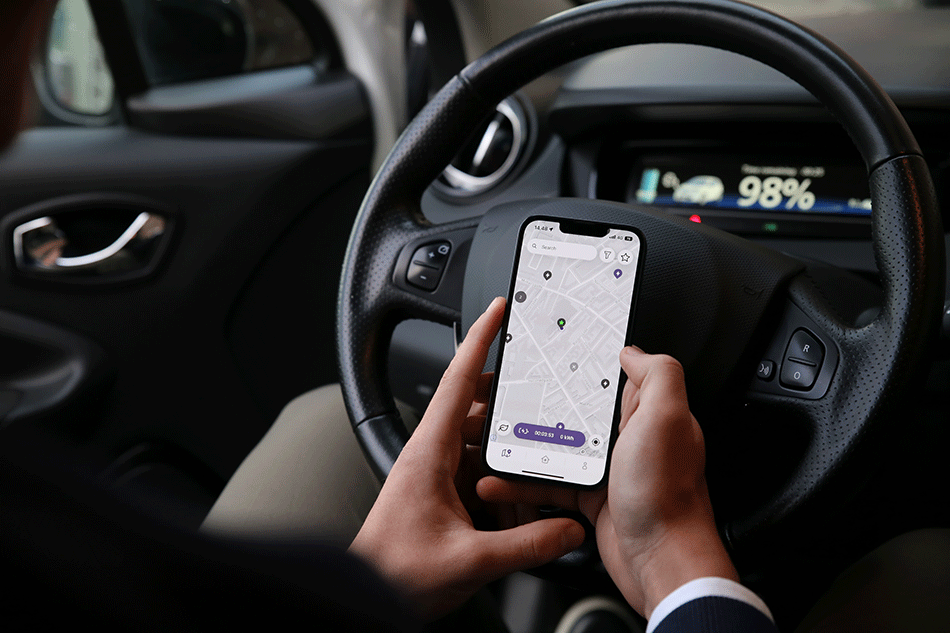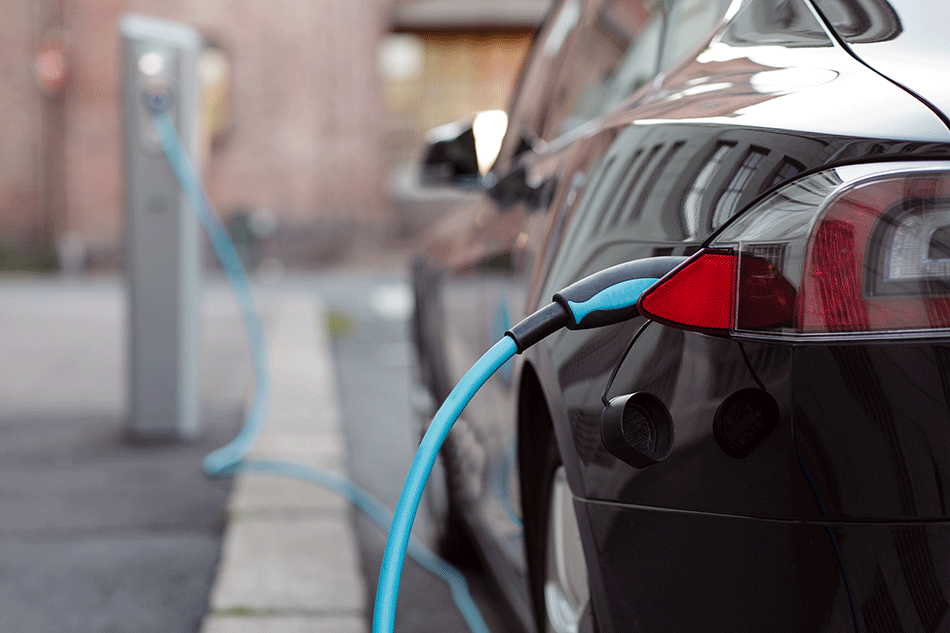eMobility is evolving fast, and very soon it will not be defined by hardware rollouts or the number of chargers in the ground. With EV infrastructure at an inflection point, industry CEO and pioneer Tore Harritshøj unpicks how past technologies can help predict what is coming next.
To accurately describe the profound changes that are occurring in the eMobility and EV-charging industry, we first must take a trip 16 years into the past and glance at an entirely different industry that went through a remarkably similar phase.
“It’s just one more entrant into an already very busy space, with lots of choice for consumers” – that’s roughly how Jim Balsillie, former Co-CEO of BlackBerry manufacturing company RIM, described Apple’s iPhone in an early 2007 interview with Reuters.
Questioning whether this was a sea-change moment for Blackberry, Balsillie said he thought that was an overstatement. However, as we know now, that ‘sea-change’ turned out to be more like a tsunami.
There are plenty of examples like the above, of how a misjudgment or perhaps ignorance can cost a company its grip on an entire industry – and it will not be the last time that it happens either.
But many of these instances have one thing in common: the inability to see how the natural phases of a technological evolution will play out.
Sure, from a nuts-and-bolts point of view, the iPhone was just one more entrant into the smartphone space, but what manufacturers such as RIM, Nokia, Sony Ericsson, and many others failed to see was that it also represented a tectonic shift into entirely new platform-based eras for that industry.
Suddenly, the access to a special platform became part of the offering, and the hardware attributes began to matter less and less.
Almost every sector in technology follows a similar pattern.
Largely every sector in the technology industries follows the same pattern:
First, the market focuses on the hardware winners – the companies making the most innovative products that drive and enable a new normal and set a new baseline for use and performance.
Second, a common or exclusive platform that offers specific services based on the power of those hardware products becomes a key differentiator.
And third? The largest of the platform winners, often software-centric firms, will likely become the winners of the platform-based era and define how hardware suppliers operate.

For Apple, the platform era win came via the iOS and access to the App Store catalogue.
Google, meanwhile, saw the wind changing, scrapped its prototype BlackBerry clone, and pivoted hard to make the Android platform what it is today.
Both Apple and Google managed to emerge with a split victory, now commanding the way consumers across the world use their hardware smartphones. And they did this in such a strong way that almost no new entrants stand a chance.
Their dominance means that the hardware now needs to be built to enable the platform, rather than the other way around.
It is largely the same dynamic that is present when it comes to computers, operating systems, Televisions, and even in agriculture – one of the world’s oldest technology industries.
This platform-as-a-service (PaaS) era is here to stay, and it is exactly where we are about to be with eMobility technology, meaning that tremendous changes are coming to the way we think about EV infrastructure.
Second wave successes
Earlier, the battle cry of the EV industry was to build charging stations and to build them fast.
And with good reason – without this hardware infrastructure in place, you will have more EVs than available chargers, causing a gridlock in the push for electrifying the transportation sector. This push created an industry where hardware was, for a while at least, the most important part of the puzzle.
But while catering to that initial challenge, some may have lost track of the usual waves of change within a technology? To revisit the cellphone metaphor: when is the iPhone of the eMobility world going to come out from the woodwork?
Building the platform for the future
Before we can scope who, the platform winners will be, we can close in on what it looks like when platforms drive eMobility, and what a platform-first EV industry actually enables.
And we can characterize the drivers of this winning pivot as intelligence, integration, and new value streams.
With wider adoption and the greater economies of scale that accompany it, EV infrastructure will evolve from being a one-sided user of the energy grid, to an integral, proactive part of the grid itself.
 This integration across industries unlocks enormous new value streams, and the seeds for this transformation are already being sown.
This integration across industries unlocks enormous new value streams, and the seeds for this transformation are already being sown.
At Spirii, for example, our cloud-based platform architecture enables us to offer grid-friendly features like dynamic load sharing, energy management integration, and, more recently, dynamic responses to changes in demand. These features allow chargers, drivers, and charge point operators to actively steer and service the energy grid, rather than merely drawing energy from it.
This is a significant development for an industry with inherent scaling challenges, demonstrating that software and a platform approach can address issues that hardware alone cannot.
Crucially, this evolution—aided by further technological democratization—will see charging hardware become less central to eMobility’s growth.
In the same way that a cheap Android phone may provide access to the same platform features as a much more expensive one, charging stations are transitioning from being the core of the EV transition to being an enabler of new platform-based solutions.
The winners of this transformational wave will likely be the second-generation software entrants or the industry players who either manage to consolidate smaller players to create economies of scale or reinvent themselves by shifting from hardware to software.
Mind you that this is a transformational shift which few hardware companies have successfully achieved in the past, Apple being a notable exception.
Also, it is highly unlikely that the winners of the first transformational wave will continue to exist by the third wave. If they do, they will likely sit on significantly smaller parts of the market compared to what they dominate today.
As an example, we can ask newer generations how they perceive companies like IBM, Compaq, Olivetti, and NCR today – the leaders of the PC transformation. We can also ask them about Nokia, Sony Ericsson, and Motorola – the former giants of the Telecom industry, all mostly disappeared today, or having pivoted into other parts of the industry.
What is next and how will it happen?
Safe to say that we have now fully entered the second transformation wave, and the shift towards features, platform value extraction, and software is already well underway.
It is evident that some of the hardware giants of the first wave are beginning to struggle or potentially will very soon.
The focus is no longer on commoditized hardware, but on how to enable the software and services that run on it.
 Customer dialogues are now mostly centered on mission-critical capabilities, and future integrated platform services and revenue streams.
Customer dialogues are now mostly centered on mission-critical capabilities, and future integrated platform services and revenue streams.
The winners of the current second-wave transformation are poised to excel in the rapidly emerging third wave, although a battle among the winning platforms is anticipated, just like Android and iOS competed back then and continue to compete today.
The pioneers and leaders of the platform and software enablement phase will leverage their volume, scale, and strategic accounts to lock down and create economies of scale and mission-critical stickiness.
This will likely unlock the third platform phase with multisector integrations, as the transformation is fully adopted at a global level.
For the energy sector itself, this means an adoption trajectory similar to what we have witnessed with iOS, Android, and Microsoft, ultimately enabling a number of value-extracting giants, likely to become highly valued corporate giants, almost impossible to challenge.
The global PaaS market overall is expected to grow to USD 290 billion by 2030, illustrating just how powerful the third wave will wash in over yet another area of technology.
At Spirii, we know that eMobility will have a significant part to play in the platform market. Global reach is key, and platforms must extend across multiple international markets to truly bring about the third wave of EV platform-focused economic changes.
For us, the software-based technology wave, is one that we have anticipated for several years now. We realized early on how charging tech can become an economy-driving powerhouse when combined it with interconnected software that puts power in the hands of the people operating it.
With features such as seamless remote management, dynamic pricing models, business model designs, and feature-rich user options – we have enabled professional fleets, charge point operators, and utility, real estate, and retail industry players to turn charging into an impressive source of revenue.
But we are keenly aware that we are still only in the second phase of eMobility’s tech evolution; the emerging platform era will determine who really shapes its future. And we cannot wait to be a part of the transformation.
All the photos in the article are provided by the company(s) mentioned in the article and are used with permission.
About the Author
Tore Harritshøj is the CEO of the eMobility charging platform Spirii (www.spirii.com), which he co-founded in 2019. He has more than 27 years of experience in the energy and utilities industry and for 10 years he was CEO of the Danish branch of E.ON, one of the world’s largest energy companies. At E.ON, he was involved in developing the company from a traditional heating business to a leader in a range of innovative energy solutions, including charging solutions and infrastructure for electric vehicles (EV) and heavy transport. Since launching Spirii, Tore has turned it into an international eMobility platform offering software solutions for companies and charging operators to build, manage, and scale their eMobility business. Spirii also provides user interfaces, including apps and online environments, enabling EV drivers to use charging stations all over the world. Spirii operates in 18 countries spanning two continents. He holds an MSc Econ from University of Copenhagen.
References
- https://www.reuters.com/article/us-rim-iphone-idUSN1236561320070212/
- https://www.pcworld.com/article/464050/original_android_prototype_revealed_during_google_oracle_trial.html
- https://sourcetrace.com/blog/cloud-computing-agriculture/
- https://www.marketresearchfuture.com/reports/platform-as-a-service-market-1900










